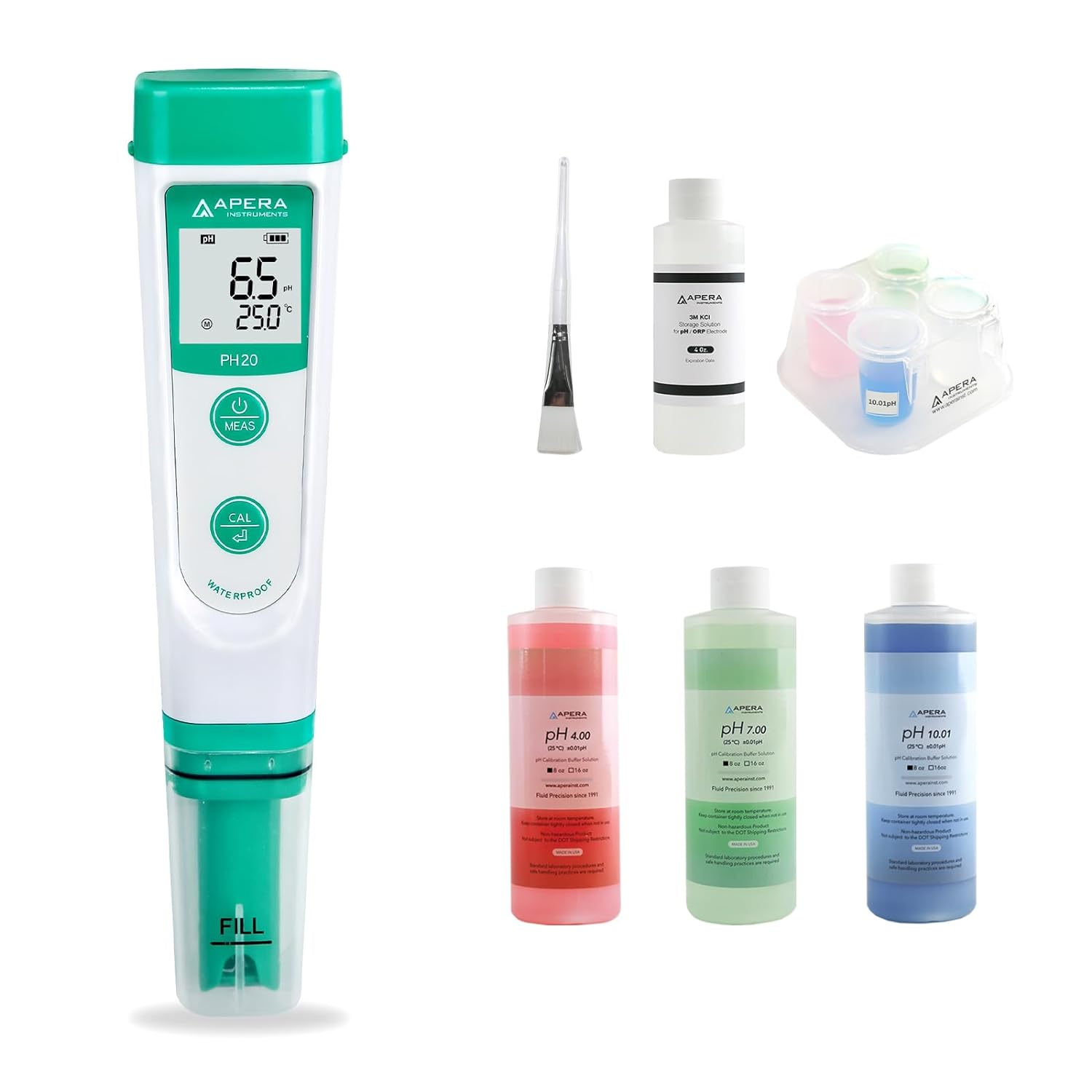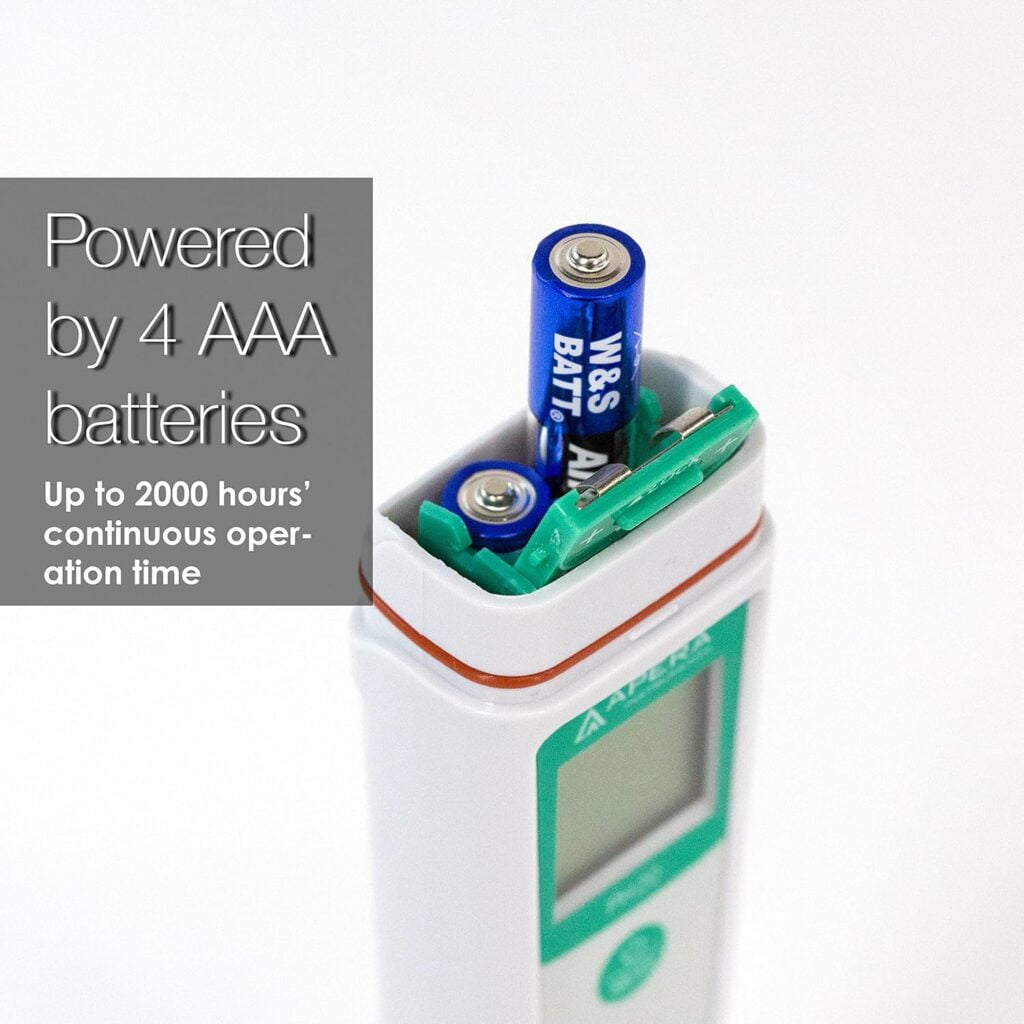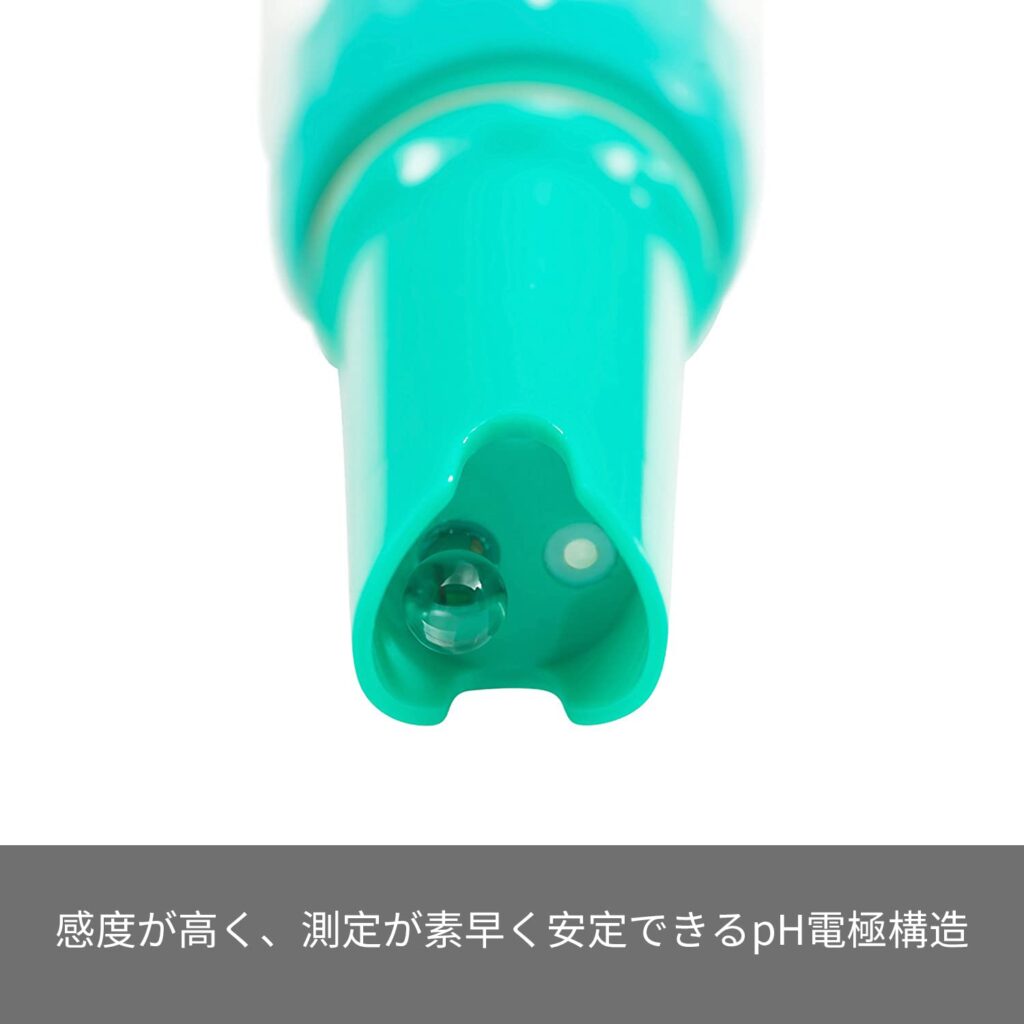Discover the benefits of sweatbands for your fitness routine. Enhance your performance and stay comfortable with these stylish and functional accessories.


A pH meter is an essential tool for measuring the acidity or alkalinity of a solution. It is widely used in various industries, including agriculture, food and beverage, water treatment, and scientific research. In this guide, we will explore the different types of pH meters, their applications, and how to choose the right one for your needs.
pH is a measure of the concentration of hydrogen ions in a solution. It is a logarithmic scale that ranges from 0 to 14, with 7 being neutral. A pH value below 7 indicates acidity, while a pH value above 7 indicates alkalinity. pH plays a crucial role in many chemical and biological processes, making it important to accurately measure and control.
Portable pH meters are handheld devices that are easy to use and carry around. They are battery-operated and often come with a built-in electrode. Portable pH meters are suitable for on-site measurements and fieldwork. They are commonly used in agriculture, aquaculture, and environmental monitoring.
Benchtop pH meters are larger and more advanced than portable pH meters. They are designed for laboratory use and offer higher accuracy and precision. Benchtop pH meters usually have a separate electrode and a larger display for easy reading. They are commonly used in scientific research, quality control, and educational institutions.
Pen-style pH meters are compact and resemble a pen in shape. They are easy to carry and operate, making them suitable for quick pH measurements. Pen-style pH meters often have a built-in electrode and a digital display. They are commonly used by hobbyists, homebrewers, and pool owners.

A pH meter consists of three main components: a pH electrode, a reference electrode, and a pH meter device. The pH electrode is the sensing part of the meter and is responsible for measuring the hydrogen ion concentration. The reference electrode provides a stable reference potential for accurate measurements. The pH meter device amplifies the signals from the electrodes and converts them into pH values.
When the pH electrode comes into contact with a solution, it generates a small voltage proportional to the hydrogen ion concentration. The reference electrode, which is filled with a reference solution, maintains a constant potential. The pH meter device measures the voltage difference between the two electrodes and converts it into a pH value using a calibration curve.
Calibration is an essential step in using a pH meter to ensure accurate and reliable measurements. pH meters should be calibrated before each use or at regular intervals, depending on the manufacturer’s instructions. The calibration process involves immersing the pH electrode in standard buffer solutions with known pH values and adjusting the meter accordingly.
Typically, two or three buffer solutions are used for calibration, covering the desired pH range. The pH meter is adjusted using the calibration knobs or buttons until it displays the correct pH values. It is important to follow the manufacturer’s instructions and use fresh buffer solutions for calibration.
pH meters are widely used in agriculture to measure the pH of soil and water. Soil pH affects nutrient availability and microbial activity, which are crucial for plant growth. pH meters help farmers and gardeners determine the optimal pH range for different crops and adjust soil acidity or alkalinity accordingly. In hydroponics, pH meters are used to monitor and control the pH of nutrient solutions.
pH plays a critical role in the food and beverage industry. It affects the taste, texture, and shelf life of various products. meters are used to measure the acidity of fruits, vegetables, dairy products, beverages, and other food items. They help ensure the quality and safety of food products by monitoring pH during production, processing, and storage.
pH is an important parameter in water treatment processes. It affects the efficiency of disinfection, coagulation, and precipitation. meters are used to monitor the pH of drinking water, wastewater, and industrial process water. They help water treatment plants maintain the desired pH range and ensure compliance with regulatory standards.
pH meters are extensively used in scientific research, particularly in chemistry, biology, and environmental science. They are used to measure the pH of solutions, buffers, and biological samples. meters help researchers study chemical reactions, enzyme activity, cell culture, and other biological processes. They are also used in environmental monitoring to assess water quality and pollution levels.

When choosing a pH meter, several factors should be considered:
Accuracy and precision are crucial for obtaining reliable pH measurements. Look for a meter with a high accuracy and precision rating. Check if the meter has automatic temperature compensation (ATC) to correct for temperature variations, as pH is temperature-dependent.
The type of electrode used in the meter is important. Glass electrodes are commonly used for general-purpose measurements, while specialized electrodes are available for specific applications, such as pH measurements in soil or food samples. Consider the compatibility of the electrode with your intended samples.
Consider the ease of calibration and maintenance of the meter. Look for a meter that offers one-point or two-point calibration with automatic buffer recognition. Some meters also have a self-diagnostic function to alert you when calibration or electrode replacement is required.
Check the size and readability of the meter’s display. A backlit display is useful for low-light conditions. Consider the user interface and navigation buttons for ease of use. Some meters also offer data logging and connectivity features for data management.
Set a budget for your meter purchase. Prices can vary depending on the features and brand. Consider the long-term cost of electrode replacement and calibration solutions.
To ensure the longevity and accuracy of your meter, proper maintenance and care are essential:
Store your meter in a clean and dry place. Keep it protected from extreme temperatures and humidity. Some meters come with a storage solution or cap to keep the electrode hydrated and prevent drying out.
Clean the pH electrode after each use to remove any residue or contaminants. Rinse it with distilled water and gently wipe it with a soft cloth or tissue. Avoid using tap water or abrasive materials, as they can damage the electrode.
If your pH meter has a separate electrode, follow the manufacturer’s instructions for electrode storage and maintenance. Some electrodes require regular soaking in storage solution or calibration solution to maintain their performance.
Regularly calibrate your meter as per the manufacturer’s instructions. Use fresh buffer solutions and follow the recommended calibration procedure. Calibration should be done before each use or at regular intervals, depending on the frequency of use.
Monitor the performance of your pH electrode and replace it when necessary. Signs of a worn-out electrode include slow response time, unstable readings, and difficulty in calibration. Follow the manufacturer’s guidelines for electrode replacement.

When choosing a pH meter, there are several factors to consider to ensure that you select the right one for your needs:
Accuracy and precision are essential when it comes to pH measurements. Look for a meter that has a high accuracy rating and provides precise readings. It is also important to consider whether the pH meter has automatic temperature compensation (ATC), as pH values are temperature-dependent. ATC ensures that the pH readings are corrected for temperature variations, resulting in more accurate measurements.
The type of electrode used in the pH meter is another important factor to consider. The most common type of electrode is a glass electrode, which is suitable for general-purpose pH measurements. However, if you have specific applications in mind, such as measuring the pH of soil or food samples, you may need a specialized electrode. For example, a soil pH electrode has a longer and thicker design to penetrate the soil easily and provide accurate readings.
Consider the ease of calibration and maintenance of the meter. Look for a meter that offers one-point or two-point calibration with automatic buffer recognition. One-point calibration involves using a single buffer solution with a known pH value, while two-point calibration involves using two buffer solutions with known pH values. Automatic buffer recognition simplifies the calibration process by automatically detecting the buffer solution and adjusting the meter accordingly. Some meters also have a self-diagnostic function that alerts you when calibration or electrode replacement is required.
Check the size and readability of the pH meter’s display. A larger display with a backlight is useful for low-light conditions. Consider the user interface and navigation buttons for ease of use. Some meters have a touchscreen interface, while others have physical buttons. It is important to choose a meter with a user-friendly interface that allows you to easily navigate through the different settings and options.
If you require data logging or connectivity features, look for a pH meter that offers these capabilities. Some pH meters have built-in memory for storing measurement data, while others can be connected to a computer or mobile device for data transfer and analysis. Data logging and connectivity features are particularly useful if you need to track and analyze pH measurements over time or if you want to integrate the pH meter with other laboratory equipment or software.
Set a budget for your pH meter purchase. Prices can vary widely depending on the brand, features, and quality of the pH meter. Consider the long-term cost of electrode replacement and calibration solutions, as these will need to be replaced regularly to maintain the accuracy and performance of the pH meter. It is important to strike a balance between your budget and the features and quality of the pH meter to ensure that you get the best value for your money.
It is recommended to calibrate your meter before each use or at regular intervals, depending on the manufacturer’s instructions. This ensures accurate and reliable measurements.
No, tap water can contain impurities and minerals that can affect the performance of the pH electrode. It is best to use distilled water for cleaning.
ATC is a feature in meters that compensates for the temperature variations in the sample. pH is temperature-dependent, and ATC ensures accurate pH measurements by adjusting for temperature differences.
You should monitor the performance of your pH electrode. Signs of a worn-out electrode include slow response time, unstable readings, and difficulty in calibration. Follow the manufacturer’s guidelines for electrode replacement.
No, pH meters are designed for measuring the pH of liquid solutions. For solid samples, you can create a slurry by mixing the solid with a liquid and then measure the pH of the resulting solution.
Most pH meters are designed for measuring the pH of aqueous solutions. However, there are specialized pH meters available for measuring the pH of non-aqueous solutions, such as oils and creams.

pH meters are essential tools for measuring the acidity or alkalinity of solutions. They are widely used in various industries, including agriculture, food and beverage, water treatment, and scientific research. When choosing a pH meter, consider factors such as accuracy, electrode type, calibration, and budget. Proper maintenance and care of pH meters are important for their longevity and accuracy. By following the guidelines and understanding the applications of pH meters, you can make informed decisions and ensure accurate pH measurements in your specific field.
meters are versatile tools used in various industries for measuring the acidity or alkalinity of solutions. They play a crucial role in agriculture, food and beverage, water treatment, and scientific research. By understanding the different types of pH meters, their applications, and how to choose the right one, you can make informed decisions and ensure accurate pH measurements. Proper maintenance and care of meters are essential for their longevity and accuracy.